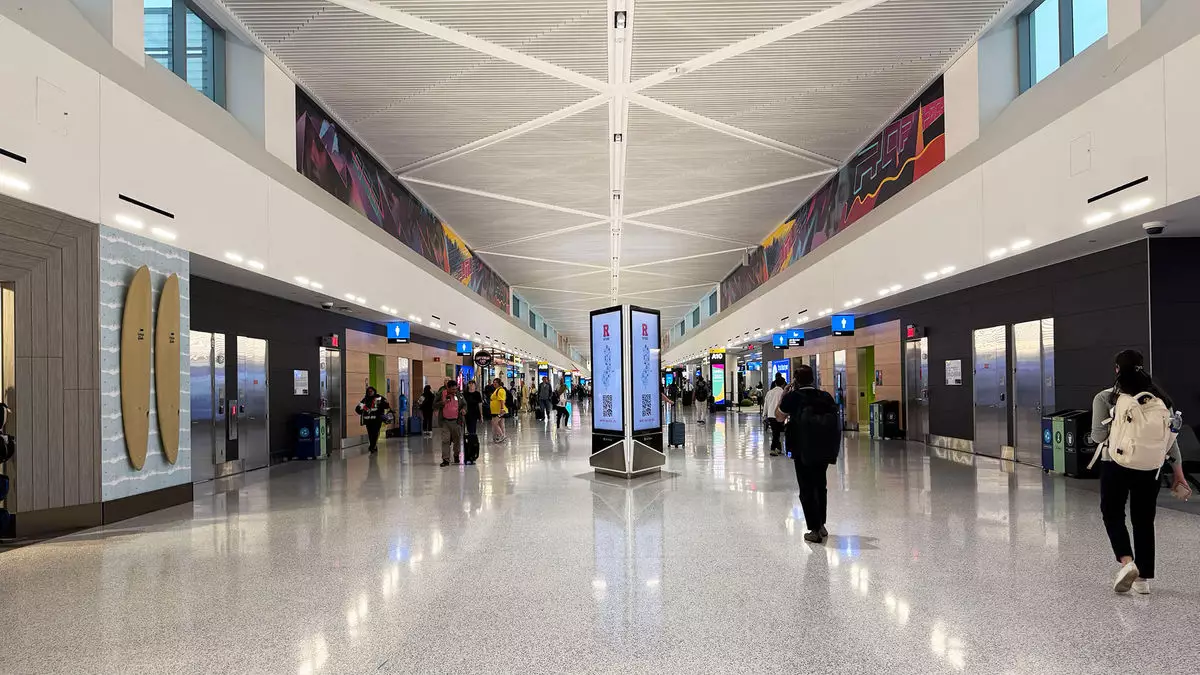In a remarkable development, Newark Liberty International Airport recently celebrated the reopening of its runway 4L-22R, nearly two weeks ahead of schedule. Managed by the Port Authority of New York and New Jersey, this swift completion marks a significant milestone for the airport, especially after enduring a period of limited operational capability. The runway, closed since April 15 for much-needed repairs, dramatically reduced Newark’s available runways, leading to an array of flight delays and service disruptions. This event underscored the vulnerability of air travel infrastructure, particularly in high-demand situations, and raised questions about efficiency and preparedness in airport operations.
With only two runways active during the repair period, the airport was thrust into a state of crisis, exacerbated by concurrent complications at the air traffic control facility near Philadelphia. Reports of a communication blackout added to the chaos, resulting in a domino effect of delays and cancellations that tarnished Newark’s operational image. Such challenges highlight the critical need for strategic crisis management and resource allocation in air transportation systems, revealing how precarious air travel can become due to infrastructure inadequacies.
The Strategic Response of Stakeholders
In an admirable display of collaborative crisis management, the Port Authority, along with United Airlines—the airport’s primary carrier—implemented several tactical measures to alleviate the upheaval. United chose to voluntarily reduce its daily flights by 35, demonstrating an understanding of the need to ease congestion. Following this, the FAA intervened, capping operations at 56 hourly arrivals and departures. Such decisions, although pivotal, point to the overarching question of whether, in such a crucial transportation hub, there should be inconsistency leading to operational interruptions.
The Port Authority’s proactive approach to expedite construction on the runway involved expanding work hours and bringing in additional crews, a commendable strategy that emphasizes the necessity for agility in airport management. Executive director Rick Cotton’s assertion that the organization rose to the occasion to accelerate construction underlines the importance of flexibility and prompt decision-making during infrastructure projects, particularly when dealing with complex variables like air traffic demand.
Investment in Infrastructure as a Path Forward
The runway’s rehabilitation—a $128 million investment—encompasses critical improvements, including resurfacing, enhanced lighting, and upgraded drainage systems. This financial commitment signifies a broader understanding of the urgent need for reliable air travel infrastructure, particularly in an age where air travel demand is soaring. Upgraded facilities not only improve safety but also foster a more seamless experience for travelers, affirming the importance of continual investment in transportation infrastructure.
Transportation Secretary Sean Duffy directly commended this timely completion for its potential to ease flight congestion, showcasing how forward-thinking policies and investments can directly influence operational reliability. With enhanced facilities, Newark Liberty Airport is poised to mitigate future disruptions and sustain a level of service that meets passenger demand, emphasizing that strategic foresight in infrastructural investments is not merely beneficial, but essential.
The Future Outlook for Newark Liberty Airport
Looking ahead, United Airlines’ CEO Scott Kirby heralds promising prospects for Newark Liberty, suggesting it may emerge as the most reliable of New York’s airports this summer. He optimistically pointed to historical performance improvements over holiday weekends, asserting that the streamlined management of takeoff and landing capacities could significantly enhance on-time performance metrics.
However, this evolving paradigm raises intriguing questions about market dynamics within air travel. Kirby’s assertion that the reduction in bookings could lead to lower fares while providing more available seats dovetails with broader economic principles that could reshape the future of air travel pricing and availability. These shifts hint at a transformative moment where operational efficiency aligns with consumer benefit, underscoring a vital equilibrium necessary for sustaining a robust air travel market.
As operational realities evolve, the attention now turns to whether these changes can endure over the long term, particularly in terms of flight capacity and the impact of regulatory measures instituted by the FAA. United’s plans to cautiously resume increased flight operations as runway capacity allows demonstrate the ongoing challenges and opportunities within the complex ecosystem of air travel. The narrative of recovery and innovation at Newark Liberty Airport serves as a potent reminder of the importance of adaptability and resilience in the face of operational difficulties—a lesson that resonates far beyond the runways themselves.


Leave a Reply